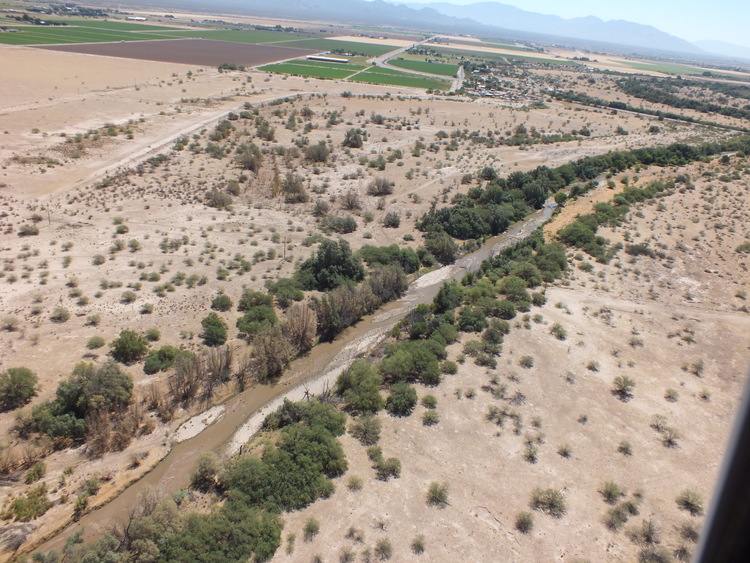UPDATE
The new results for the Living River project have been published. Several highlights include the reduction of odors from the reclamation facility, identification of several new fish species in the river, and improved water quality. To find out more about the changes seen this year, and to read the full report check out this link.
Last week, members of the Technical Advisory team for the Living River project took a helicopter ride over the Lower Santa Cruz river. Water Director, John Kmiec, and other water professionals from around the region flew the 23-mile stretch of the river in Pima County as part of the annual data collection process. The water flowing in the Santa Cruz is mainly highly treated wastewater, which accounts for most of the daily streamflow. There are other sources that contribute to the water flow including run off from rains throughout the Tucson region. The future of water in the region can be seen in the work being done at the Water Reclamation facilities. The water introduced into the river and the runoff from other sources helps to recharge the aquifer and support the long term health of the water system.
An excerpt from the 2014 Living River annual report.
In the mid-20th century, the Lower Santa Cruz largely began to disappear due to the pumping of groundwater. Highly treated effluent water was introduced into the system at two treatment facilities that has allowed for some areas of the river to flow year round. This also helped to create important wildlife habitat, and a community amenity connected to several parks and The Loop system. The two treatment facilities have been in operation since the 1970s. In 2013, almost $600 million capital investment to increase the water quality from these facilities was completed. One of the goals of this capital investment was to increase the quality of the water being introduced to the river. The water from Agua Nueva and Tres Rios has provided an increase in water quality that has been the catalyst for the increased vegetation and wildlife presence.
The indicators used to determine the health of the Lower Santa Cruz
The Living River project gathers data on the health of the Lower Santa Cruz. Partnering with the Sonoran Institute, Pima County put together a monitoring program to asses the conditions of the river and the surrounding ecosystem. These represent "a breadth of biological, chemical, physical and social properties" that will identify how the river is doing. The analysis of the 2014 conditions can be found in the report here.
From left to right: John Kmiec, Marana Water Director; Evan Canfield, Pima County Flood Control; Molly Collins, Tucson Water; Tad Bommarito, US Bureau of Reclamation; Brian Powell, Pima County Office of Sustainability & Conservation
Mr. Kmiec serves on the Technical Advisory team for the project. His extensive knowledge of hydrology and geology helps the group analyze the current status of the river flows, sediment transport, water quality, and other indicators. This group also prepares the sampling schedule and the final draft document.






The Lower Santa Cruz flows through the Town of Marana, and is an important part of the history of the region. Marana Water works collaboratively with organizations like the Sonoran Institute to ensure that this amenity remains viable for future generations.



